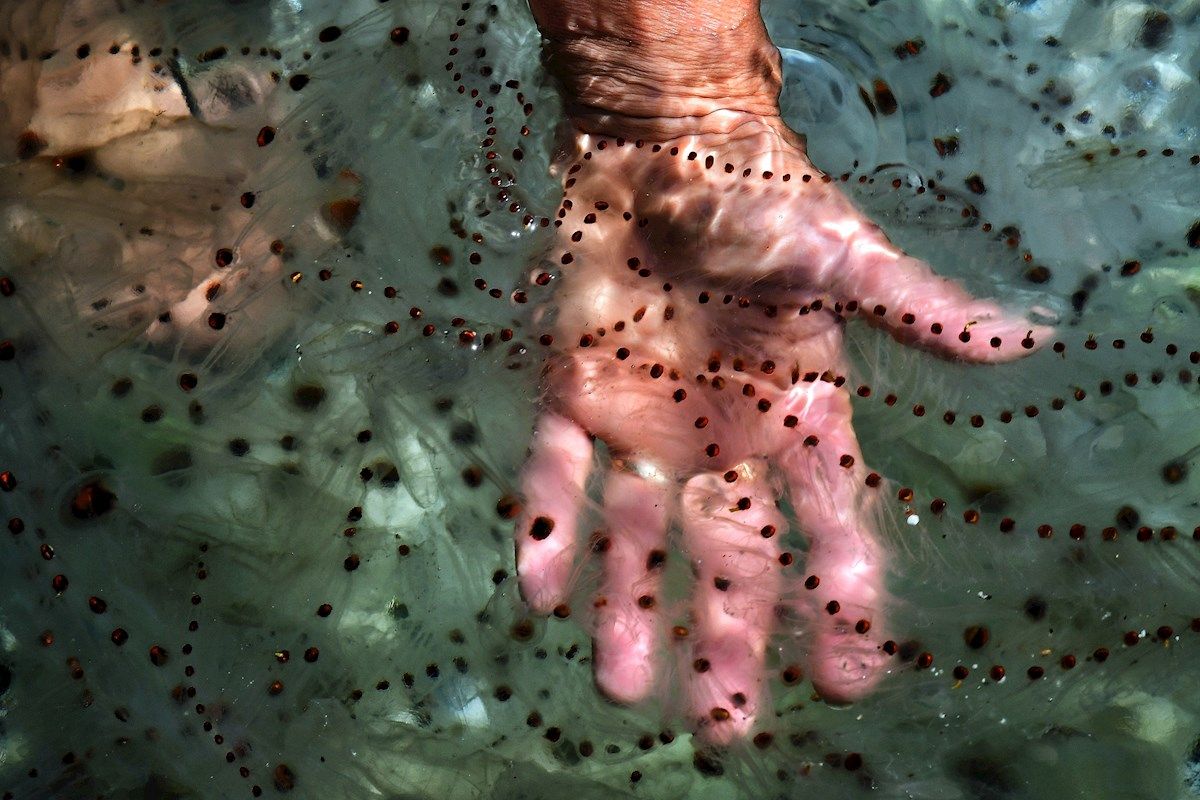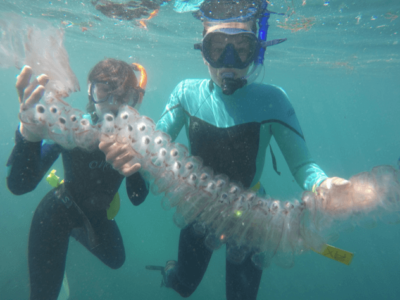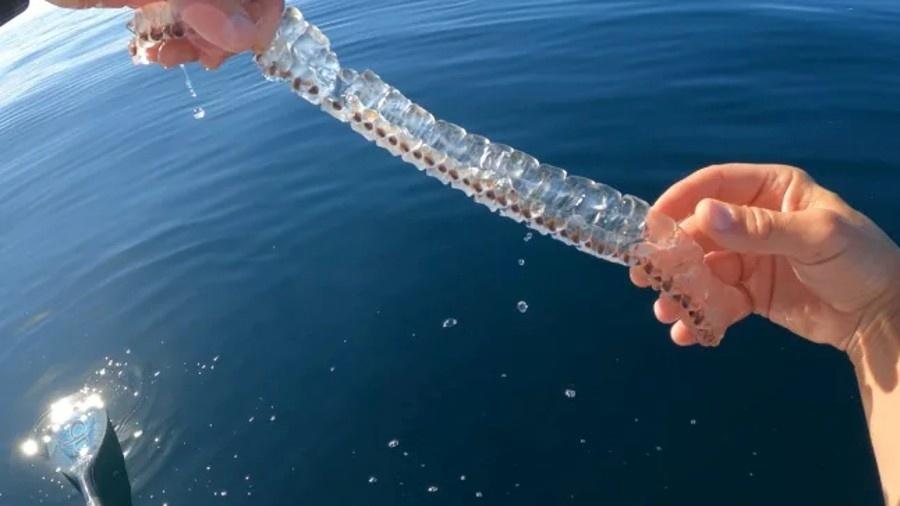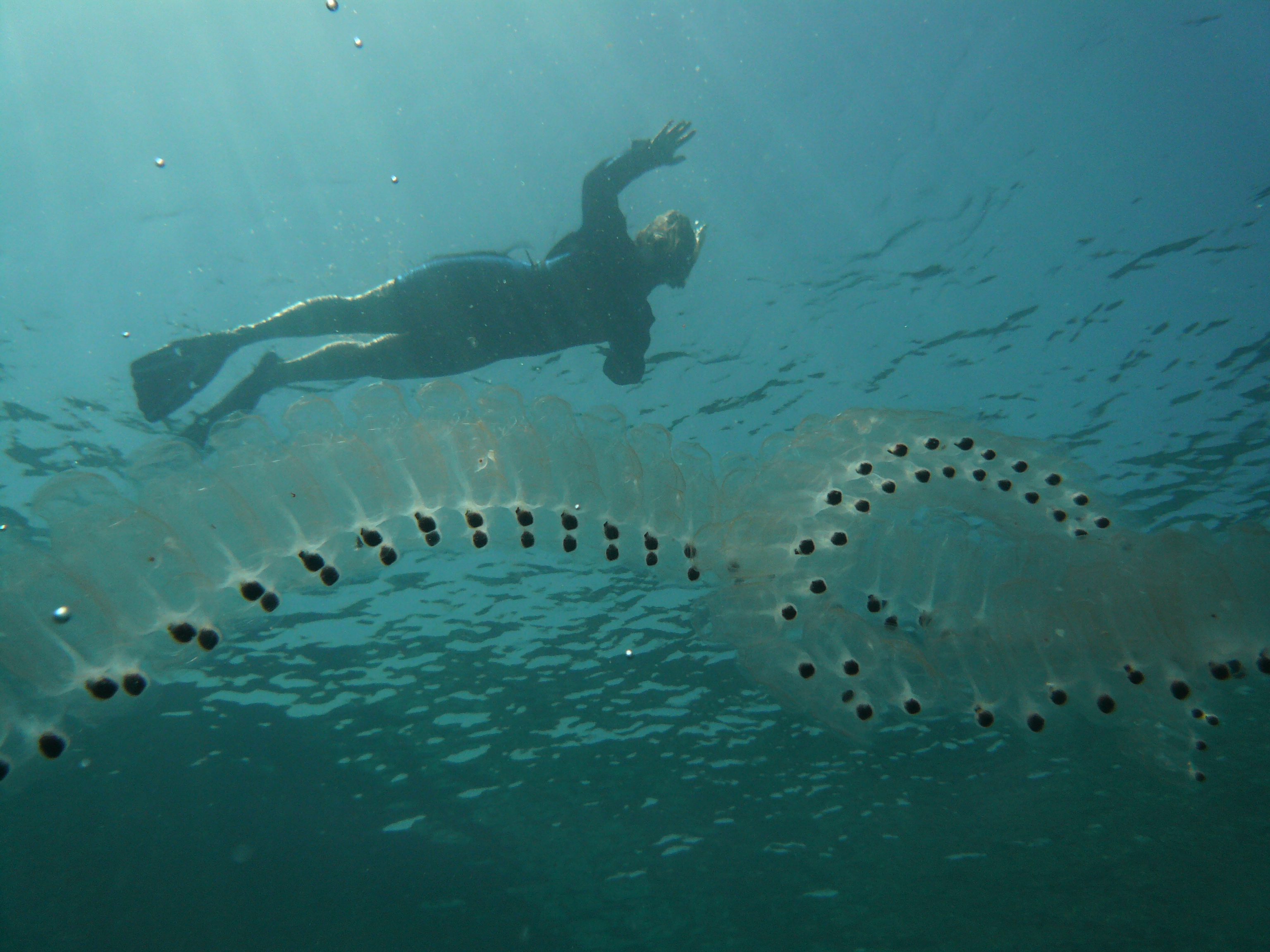You ask us if it is true that the salps that appear on Spanish beaches in summer are harmless, as stated in viral content. Biologists confirm that these beings, which look like jellyfish, do not sting nor are they dangerous.

It is not a jellyfish nor does it sting the bathers it encounters in the sea. Salps are almost transparent and gelatinous marine invertebrates that return to Spanish beaches and coasts, mainly in the Mediterranean , at the end of spring and beginning of summer. In recent days, content about this animal has been disseminated that already has almost 50 thousand interactions on Facebook.

Specifically, an image has been shared of a person (with only his arm visible) grabbing a salp on a beach. The photo is accompanied by a text stating that these beings are “harmless” and that they are capable of “capturing 4,000 tons of CO2 every night and accumulating it in the sea.”

You have asked us through our WhatsApp verification service (+34 627 28 08 15) if this is true, so from Newtral.es we have consulted the biologist Josep María Gili, from the Institute of Marine Sciences of the Superior Council of Scientific Research (CSIC), who confirms that these beings “are not dangerous” , so it is not necessary to “run away” if we find them in the sea. We explain what is known about this invertebrate that has gone viral.
What are the salps that appear on beaches?
Although they are often confused with jellyfish due to their gelatinous appearance, salps are tunicates , invertebrate and hermaphrodite marine organisms, which propel themselves by expelling pressurized water thanks to the action of a series of muscular bands .
Attracted by the increase in phytoplankton, salps usually return to the Spanish coasts in late spring and early summer, explains Gili.
Salps have also been recorded on the beaches in 2021
The authorities not only reported the appearance of salps on Spanish beaches in 2019. The San Sebastián Aquarium (Basque Country) also confirmed in early 2021 the presence of salps on Ondarreta beach, which appeared due to “a large amount of phytoplankton” in the area or to “large currents.”
“Sometimes we don’t realize that the salps are there because we confuse them with jellyfish or even plastic remains,” Gili explains to Newtral.es.
“In addition, they usually come to eat at night. This is because, although they are translucent, they have a brown stomach that can be distinguished when it is full of phytoplankton , which is why they come out when their predators (birds, fish or even turtles) do not distinguish them,” he adds.

Is it true that beach salps clean the air?
In the content we have received it is said that salps “clean our air.” “They feed on phytoplankton and their colonies are capable of capturing 4,000 tons of CO2 every night and accumulating it in the sea. That is, they are cleaning our air,” the message states.
From the Institute of Marine Sciences of the CSIC, Gili specifies that this supposed cleaning of the air is not a direct effect. “ Phytoplankton are unicellular plant and photosynthetic organisms. That is, they absorb CO2. The salps feed on them, but they do not capture CO2 directly,” the biologist tells Newtral.es.

In any case, it is true, as stated in the viral content, that salps, which are sometimes confused with jellyfish, are harmless . “They are not toxic nor do they sting or cause hives, so if you come across one of these invertebrates in the sea, do not run away or do anything to it. You can enjoy observing these curious organisms,” concludes Gili.




